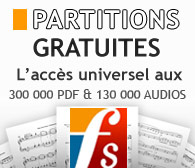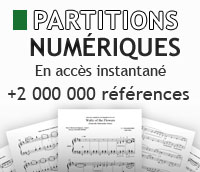| Leo, Leonardo - Allegro in G Minor from 14 Toccate for Piano No. 2 Piano seul |
VoirPDF : Allegro in G Minor (No. 2) from 14 Toccate for Piano (3 pages - 109.22 Ko)173x⬇ MP3 : Allegro in G Minor (No. 2) from 14 Toccate for Piano 28x⬇ 331x
| Compositeur : | Leo, Leonardo (1694 - 1744) | ||
| Instrumentation : | Piano seul | ||
| Genre : | Baroque | ||
| Tonalité : | Sol mineur | ||
| Arrangeur : | |||
| Editeur : |  MAGATAGAN, MICHAEL (1960 - ) MAGATAGAN, MICHAEL (1960 - ) | ||
| Droit d'auteur : | Public Domain | ||
| Ajoutée par magataganm, 14 Mai 2020 Leonardo Leo (1694 – 1744), more correctly Lionardo Oronzo Salvatore de Leo, was a Neapolitan Baroque composer. Leo was born in San Vito degli Schiavoni (current San Vito dei Normanni, province of Brindisi) in the Apulia region, then part of the Kingdom of Naples. He became a student at the Conservatorio della Pietà dei Turchini at Naples in 1703, and was a pupil first of Francesco Provenzale and later of Nicola Fago. It has been supposed that he was a pupil of Pitoni and Alessandro Scarlatti, but he could not possibly have studied with either of these composers, although he was undoubtedly influenced by their compositions. His earliest known work was a sacred drama, L'infedelta abbattuta, performed by his fellow-students in 1712. In 1714 he produced, at the court theatre, an opera, Pisistrato, which was much admired. He held various posts at the royal chapel, and continued to write for the stage, besides teaching at the conservatory. After adding comic scenes to Francesco Gasparini's Bajazette in 1722 for performance at Naples, he composed comic operas in Neapolitan such as La'mpeca scoperta in 1723, and L'Alidoro in 1740. His most famous comic opera was Amor vuol sofferenza (1739), better known as La Finta Frascatana, highly praised by De Brosses. He was equally distinguished as a composer of serious opera, Demofoonte (1735), Farnace (1737) and L'Olimpiade (1737) being his most famous works in this branch, and is still better known as a composer of sacred music. He died of a stroke while engaged in the composition of new arias for a revival of La Finta Frascatana. Leo was the first of the Neapolitan school to obtain a complete mastery over modern harmonic counterpoint. His sacred music is masterly and dignified, logical rather than passionate, and free from the sentimentality which is present in the work of Francesco Durante and Giovanni Battista Pergolesi. His serious operas suffer from a coldness and severity of style, but in his comic operas he shows a keen sense of humour. His ensemble movements are spirited, but never worked up to a strong climax. A fine and characteristic example of his sacred music is the Dixit Dominus in C, edited by CV Stanford and published by Novello. A number of songs from operas are accessible in modern editions. . Source: Wikipedia (https://en.wikipedia.org/wiki/Leonardo_Leo). Although originally created for Harpsichord or Organ, I created this Transcription of the Allegro in G Minor (No. 2) from 14 Toccate per Cembalo for Piano. | |||








